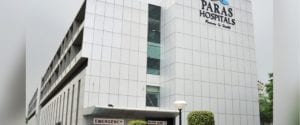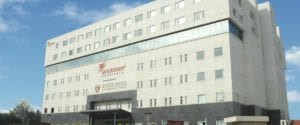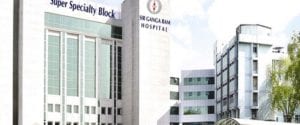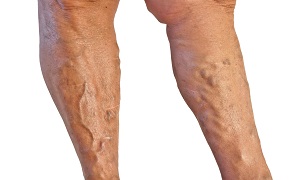Best Sclerotherapy Doctors in India
Best Sclerotherapy Hospitals in India
Paras Hospital, Gurugram
- City: Gurugram, India
Hospital Highlights:
- Paras hospital was established in 2006 and is the 250 bedded flagship hospital of Paras Healthcare.
- The is supported by a team of doctors of international and national repute.
- The hospital is NABH accredited and also the first hospital in the region to have a NABL accredited laboratory.
- The hospital provides specialty medical services in around 55 departments including Neurosciences, Joint Replacement, Mother & Child Care, Minimal Invasive Surgery, Gynecology and Obstetrics, Ophthalmology, Dermatology, Endocrinology, Rheumatology, Cosmetic and Plastic surgery.
- The hospital is equipped with state-of-the-art technologies.
S L Raheja Hospital, Mahim, Mumbai
- City: Mumbai, India
Hospital Highlights:
- SL Raheja hospital is a 140-bed multi-specialty tertiary care hospital that is being managed by Fortis Healthcare Ltd.
- The hospital is a benchmark in healthcare and medical facilities in the neighborhood of Mahim & the western suburbs.
- L.Raheja Hospital, Mahim has one of the most effective ICU and Casualty care services.
- The hospital provides specialty medical services in Cardiology, Oncology, Neurology, Orthopedics, Mother & Child Care, and in Diabetes.
Wockhardt Hospitals, Mumbai
- City: Mumbai, India
Hospital Highlights:
- Wockhardt Hospitals were established in the year 1973, originally called First Hospitals and Heart Institute.
- Wockhardt Hospitals are super specialty health care networks in India, nurtured by Wockhardt Ltd, India’s 5th largest Pharmaceutical and Healthcare company.
- Wockhardt Hospitals is associated with Partners Harvard Medical International, an international arm of Harvard Medical School, USA.
- Wockhardt Heart Hospital performed India’s first endoscopic heart surgery.
- The hospital has a state-of-the-art infrastructure equipped with the latest technologies and modern equipment.
- It has special Centers of Excellence dedicated to the major specialties to provide hassle-free and high-quality clinical care.
Pushpawati Singhania Hospital & Research Institute, New Delhi
- City: New Delhi, India
Hospital Highlights:
- Established in 1996, Pushpawati Singhania Research Institute is one of the top hospitals in the NCR region, as well as one of the top facilities in India for gastroenterology. The hospital is one of South Asia’s first institutes in medical and surgical treatment for diseases related to digestion.
- The hospital is equipped with state-of-the art facilities coupled with the latest equipment as well as renowned consultants from various parts of India as well as other parts of the world.
W Pratiksha Hospital, Gurgaon
- City: Gurugram, India
Hospital Highlights:
- W Pratiksha Hospital, Gurugram, is one of the best hospitals in the NCR region. It is also a top hospital in India for IVF. Since its inception, the hospital has performed over 5500 successful IVFs. The hospital also specializes in gynecology.
- With over 20 years of experience in providing quality healthcare, the hospital is known as one of the most trusted and valued health providers in India.
- Equipped with world-class medical facilities and advanced technology, the hospital’s doctors and clinicians also have a track record of delivering excellent results. The hospital is also known for focusing on preventive well-being as much as on curative treatment.
- The hospital has earned the trust of its patients, by providing the best available treatments at affordable costs.
Narayana Superspeciality Hospital, Gurugram
- City: Gurugram, India
Hospital Highlights:
- Situated near DLF Cyber City, Gurugram, Narayana Superspecialty Hospital is one of the top medical facilities in the Delhi NCR region, catering to the needs of the people. Known for its commitment to quality medical care and patient service, the hospital is a state-of-the-art facility with planned and well-equipped sections, which includes a spacious OPD area as well as comfortable patient rooms.
- It is the closest super-specialty hospital from Indira Gandhi International Airport towards Gurugram, and also the nearest super specialty hospital from DLF Cyber City. It is also close to major residential areas in Gurugram.
- It is part of the renowned Narayana Health Group. Established in 2000, by Dr. Devi Shetty, a renowned cardiac surgeon, it has grown to be one fo India’s leading healthcare groups.
Sir Ganga Ram Hospital, New Delhi
- City: New Delhi, India
Hospital Highlights:
- Sir Ganga Ram Hospital, New Delhi is known to provide the latest medical procedures with the latest technology in all of its units.
- The hospital has a team of reputed doctors, nurses, and healthcare professionals that ensure that patients receive quality care at affordable costs.
- Staffed with a team of highly qualified doctors, dedicated nurses, and paramedical and non-medical staff, the hospital aims to lead in healthcare delivery, medical education, training, and research.
- As per the vision of the founder, the hospital also provides free treatment to the economically weaker sections of society.
- Sir Ganga Ram Hospital also provides training to young doctors under the Diplomate in National Board(DNB) program. The DNB program at the hospital was started in 1984 and it is known for currently running the maximum number of DNB specialties in the country. It also has the distinction of having the first bone bank in India.
KIMS Hospital, Hyderabad
- City: Hyderabad, India
Hospital Highlights:
- KIMS Hospital (a brand name of Krishna Institute of Medical Sciences) is one of the largest and best multi-speciality hospitals in Hyderabad. The hospital provides various treatments to an enormous number of patients.
- The hospital has a capacity of more than 3000 beds. KIMS Hospitals offers different healthcare services in more than 25 specialities and super specialities.
- The hospital is equipped with modern medical equipment and technology. It has robotic equipment to provide minimal invasive techniques for patients.
- The hospital is aimed at providing world-class healthcare facilities and services at an affordable cost for patients.
- The various specialities and departments of the hospital include neurosciences, gastroenterology & hepatology, robotic science, reproductive sciences, dental science, oncological sciences, organ transplantation, heart and lung transplantation and mother and child care.
Fortis Hospital, Shalimar Bagh
- City: New Delhi, India
Hospital Highlights:
- Fortis Hospital in Shalimar Bagh is a multi-super specialty hospital that strives to provide world-class patient care by leaving no stone unturned.
- Fortis, Shalimar Bagh, with 262 beds and a 7.34-acre footprint, provides the best level of medical care through its team of doctors, nurses, technicians, and management professionals.
Reliance Hospital, Mumbai
- City: Mumbai, India
Hospital Highlights:
- Reliance Hospital is one of the best super-specialty care hospitals in Navi Mumbai.
- The main purpose of this hospital is to become a trustworthy place for the best health and hope for society. The hospital is well connected to the suburbs of Mumbai and Navi Mumbai.
- The hospital has various specialty departments, viz., Accident & Emergency, Anesthesiology, Dental Services, Dermatology, Diabetology, Dietetics Nutrition, Endocrinology, ENT, Gastroenterology, General Surgery, Gynaecology And Obstetrics, Hepato Pancreato Biliary Surgery, Infectious Disease, Internal Medicine, Interventional Radiology, Laboratory Medicine, Minimal Access Laparoscopic Surgery, Nephrology, Neurosciences, Opthalmology, Orthopaedics, Paediatrics, Pain Management Palliative Care, Physical Medicine Rehabilitation, Plastic And Reconstructive Surgery, Psychiatry, Pulmonary Medicine, Radiology, Rheumatology, Transplant, Urology Andrology, Vascular Surgery
Sclerotherapy
Sclerotherapy is a minimally invasive procedure for treating varicose veins and spider veins. Varicose veins are known to cause itching, pain, cramping as well as discoloration. Spider veins are smaller and compared to varicose veins, they are less severe.
In addition to diminishing the appearance of varicose or spider veins, the procedure also helps to reduce pain or side effects that are caused by damaged veins. Although anyone can get varicose veins, they are more common in men than women.
After sclerotherapy is performed, the treated veins usually fade within a few weeks. Although, occasionally, seeing full results might require a month or two.
Purpose
Sclerotherapy can be done for cosmetic procedures to improve the appearance of the varicose and spider veins. It can also be done to improve symptoms related to these conditions. These symptoms can include aching, swelling, burning, night cramps, etc.
It is important to note that if done for cosmetic reasons, then the cost may not be covered by your insurance.
Preparation
Before the procedure, your doctor will perform a physical exam as well as ask you about your medical history. The physical exam will involve evaluating the involved veins or checking for any underlying blood vessel disease.
You might also need to stop taking medications, such as aspirin or blood thinners, as they can increase the chances of bleeding.
Depending on which of your veins are involved, your doctor might be requesting ultrasound imaging on the veins in your legs. Ultrasound is a painless procedure which can produce images of structures inside your body with the use of sound waves.
On the day before the procedure, do not shave and avoid applying any lotion to your legs. You need to avoid shaving and applying lotion even after the procedure until the injection site is healed. Remember to wear loose and comfortable clothing. It is better if you wear a pair of shorts so that your legs are exposed.
Procedure
Generally, sclerotherapy is performed in a doctor’s office and it doesn’t require the use of anesthesia. It requires less than an hour to complete.
Depending on how severe your condition is, the treatment should take anywhere between 15 minutes to an hour. If you are getting the treatment on your legs, you might be required to lie on your back with your legs elevated.
Depending on how far below the skin the vein is, an ultrasound might be needed as part of your procedure.
Your doctor will clean the skin around the targeted veins. Then with a fine needle, the damaged veins will be injected with a sclerosing agent. The liquid or foam solution will cause the walls of the injected vein to seal shut. Therefore, blood is then redirected to unaffected veins. Over some time, your body will be absorbing the damaged vein, making it less visible and uncomfortable.
You might require up to four treatments based on the size of the treated veins.
After the procedure
You will be able to get up and walk around after the procedure is complete. It is important to walk and move your legs to prevent the formation of blood clots.
You might be asked to wear compression stocking or bandages, for around two weeks, as they can help maintain compression on the treated veins.
Although most people return to their normal routine, it might be wise to have someone drive you home after your procedure. Your doctor might also advise you to avoid any kind of strenuous exercise for a minimum of two weeks after the procedure.
It is also important to avoid sun exposure to the treated areas during this time. The inflammation caused by the injections can lead to dark spots on your skin if it is exposed to the sun. This is more likely if you have a dark skin tone.
Results
Smaller varicose veins and spider veins generally respond quite well to sclerotherapy. You should be able to see improvement within just a few weeks. For larger varicose veins, to see any improvement, it can take up to four months.
In some cases, several sessions of the treatment might be required for eliminating all the varicose or spider veins.
Before you undergo the procedure, it is also important to have realistic expectations about the effectiveness of the treatment. It doesn’t guarantee that there will be no traces of side effects of varicose or spider veins after you undergo the procedure.
Risks
In some cases, sclerotherapy can lead to a few serious complications. Some of the side effects that might occur at the site of the injection include bruising, raised red areas, small skin sores, multiple tiny red blood vessels and darkened skin in the form of lines or spots.
Though most of these side effects should generally go away within a few days or weeks, in a few cases, some side effects might take months or even years to completely disappear.
There might be few other complications as well, although these are less common. They include:
- Inflammation- Usually, this is mild but may sometimes cause swelling, warmth, and discomfort around the injection site. Your doctor may suggest an over-the-counter pain reliever to reduce the inflammation.
- Blood clot- A lump of clotted blood can form in a treated vein. In rare cases, a blood clot may even travel to a deeper vein in your leg. This is known as deep vein thrombosis, which is an emergency situation, where the clot travels from your leg to your lungs and blocks a vital artery. It is important to seek immediate care, if you experience any difficulty in breathing, chest pain, or dizziness or if you cough up blood.
- Air bubbles- Tiny air bubbles may rise in your bloodstream and although they don’t always cause symptoms, in some cases, they might. Symptoms can include visual disturbances, fainting, headaches, and nausea. These symptoms can go away generally, but it is important to call your doctor if you experience problems with limb movement or sensation after your procedure.
- Allergic reaction- Sometimes you might also develop an allergic reaction to the solution used for treatment, although this is uncommon.












